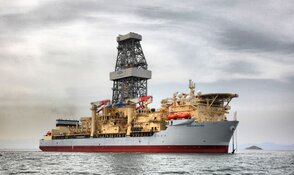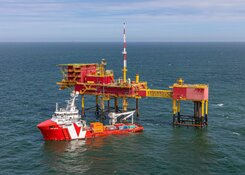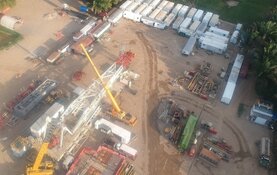Robert Cooper: The business plans for junior and midsize companies have changed dramatically in the past five years, largely due to three game-changing events. The first was the elimination of the royalty trust structure. Number two was royalty changes in Alberta. The third was the advent of horizontal drilling.
Through the mid-2000s, the trusts were essentially industry Pac-Men scooping up smaller companies. With a couple of thousand barrels of production per day, companies had an obvious exit plan via sale to the Trusts. Once the trust structure was eliminated in October 2006, so was the appetite for mergers and acquisitions (M&A) from the trusts as they had to retool their own asset bases. Many of the midsize trusts were acquired themselves and morphed into larger companies.
Secondly, the ill-conceived royalty changes in the fall of 2008, which have since been rectified, were extremely punitive to conventional producers and explorers. As a result, juniors had to adapt to lower geological risk models in order to stay in business. Finally, the development of unconventional plays through technological changes, principally horizontal drilling and multi-stage completions, caused the business model to change again, this time to a better-capitalized and longer-term business plan.
Today's smaller producers tend to have a signature property that is a resource play. The companies are usually better capitalized and generally larger than they were five years ago. While M&A still occurs, it's for strategic assets, unlike the previous market environment, where companies could put together some assets and find a buyer after three years. Now juniors need to have a scalable business plan and properties with enough scope such that if they seek to be acquired, their properties are sizeable enough to be a signature growth property for the much-larger acquirers.
TER: What are you looking for in the coming months for the oil and gas markets?
RC: Overall we'd expect continued volatility in the equity markets. The macro situation is clearly in a massive state of flux on a number of fronts. Sovereign debt concerns clearly represent the largest near-to-medium-term threat in our view. No one knows exactly what the ramifications will be if Greece or another peripheral European country defaults. But in investors' minds, that will inhibit risk taking, and that's negative for small-cap stocks and commodities, including crude oil. That said, we're much more constructive on crude than natural gas, despite the apparent downside risks in crude. Even with consistent prints in the $80s, most western Canadian sedimentary basin producers would still have pretty robust economic returns. Crude oil is ultimately a secular growth story with rising supply costs and rising demand.
With natural gas, I'd say we are neither bearish nor bullish. There might be periodic trading opportunities that are largely related to seasonality, but the big move down has taken place. The supply curve has changed, and that's severely impacted the price. On the other hand, we don't yet see a reason to become bullish.
I'd say we need to see a structural move higher in the demand curve for natural gas, and that could manifest itself through the elimination of coal-fired power plants or the implementation of natural gas-fueled vehicles for long-haul trucking, for instance. In Canada, it could be the development of export markets to Asia that could fundamentally alter the equation for Canadian producers. North America is clearly awash in natural gas for the foreseeable future. It's still bewildering to me why the U.S. doesn't incorporate natural gas into the energy mix in a much greater fashion. It would do wonders for reducing U.S. reliance on foreign sources of energy.
TER: Getting to specific companies that you cover, what are the selection criteria that you use in determining which companies you want to cover?
RC: We're normally bottom-up value investors but incorporate a macro overlay. We assemble a list of candidates and then do our due diligence on the companies that meet our criteria. First, we look at product split—gas or oil or liquids-rich gas. All of them can be very profitable at certain times in the cycle. I'd be more biased toward oil and liquids-rich gas right now. Two, we're looking at the plays and properties—conventional or unconventional. Our focus tends to be on unconventional resource plays. The third item would be management. Are they trustworthy? Have they had success previously and are they significantly, personally invested in their companies? The fourth thing would be operations. Do they have a high working interest in their properties? Do they own or control their infrastructure? Do their properties consist of repeatable play types, repeatable drilling inventory with multi-zone potential? Do they have scale and scope? The fifth thing is capital structure or valuation. Is the level of capitalization congruent with the type of opportunity the company is pursuing?
We're value investors, so we tend to look for situations where there's a mispricing of assets or a market misunderstanding combined with a pending catalyst that will propel that stock. If we're correct, this provides the opportunity to earn outsized returns.
TER: Just for a little further background—about how many companies are there in the oil and gas business in Canada of a viable size that would be of interest for you to cover?
RC: It's gotten smaller lately. Off the top of my head I'd probably say there are over 100 public companies on our radar, about 60% of which are small-to-medium-cap companies.
TER: Can you tell us about some of the companies you particularly like and give us a little detail and reason why people ought to be interested?
RC: We've been focused lately on Yoho Resources Inc. (YO:TSX.V), Crocotta Energy Inc. (CTA:TSX) and Open Range Energy Corp. (ONR:TSX). Yoho and Crocotta have the scale and scope in their properties that we think will ultimately lead them to be acquired. Open Range is a hybrid. It's a top-decile gas producer with an excellent gas-weighted property in the Deep Basin of Alberta. It has another division called Poseidon Concepts, which is a fluid handling business. Open Range announced in early September that it's spinning both these businesses out to shareholders. Its gas property still has the scale and scope that we like and think it will be acquired. The fluid handling business is going to be a whole new entity that has material growth and cash-flow generation capacity. But all of these companies fit our criteria. They've got enough scale, scope and potential that someone might decide to buy them, take over the property and apply some capex to it to really accelerate growth.
TER: Was that the philosophy behind Open Range Energy's spinoff?
RC: It was starting to look like it was suffering on a small scale from what we call the "conglomerate discount." Some investors wanted to participate directly in the tank business while others wanted to participate on the E&P (exploration and production) side. It made sense to separate the two and let investors choose a pure play in which they can participate.
TER: About a year ago, ONR was trading around $1.60 and now it's moved up to the $9.00 range. What are the prospects here after the split up? Is there still some upside at this entry point?
RC: The tank business is where the big growth is. It is scheduled to pay a $0.09 per month dividend, so, it's going to be a hybrid growth-plus-yield entity. Open Range basically created this unit from thin air. An engineer in the field figured out how to construct fluid handling tanks in a manner that allowed them to be easily assembled in the field in a matter of hours. The tanks have obvious advantages in that they are easy to use and assemble, reliable and eliminate logistical problems because they are easily transportable and its use results in a substantially smaller environmental footprint. ONR management patented the concept and managed to create a business from scratch in early 2010 into a projected $130M EBITDA (earnings before interest, taxes, depreciation and amortization) in 2012. It's had a phenomenal growth trajectory and we think that there's still room to grow, particularly in the U.S.
When the company is spun out, it will be able to operate on its own and it'll attract a different investor base, mainly yield investors. In terms of market share, we think there's still probably room to double before potentially significant competition enters the space. It's running at 80% operating margins now and that's inevitably going to attract competitors. But because they're the only player in the space at this time, they've got the early-mover advantage. The faster they maximize their market share, the more able they will be to deal with competition from a position of strength. But in the near-term, once it's spun out at the end of October (assuming investors approve), investors will be collecting what looks to be a ~15% yield out of the gate. It's very difficult to find this level of yield in today's market.
TER: They used to pay something like that in the old days, didn't they?
RC: Yes; and the upside is that if it trades down to a 10% yield investors could see potentially a ~50% capital appreciation, plus a healthy dividend. The main risk is competition. As we mentioned, the margins are stellar and that is ultimately going to result in new entrants in the market. The large service companies such as Baker Hughes (BHI:NYSE), Schlumberger (SLB:NYSE) or Halliburton (HAL:NYSE) would be formidable competition down the road.
TER: That's still a pretty phenomenal growth story in a short period of time.
RC: It truly is.
TER: What about Yoho and Crocotta?
RC: They're both pure E&Ps. We like Yoho for a bunch of reasons. Yoho's CEO is one of the most impressive exploration geologists we have followed. He's consistently early on high-potential plays and he's done that again within Yoho. He's run three or four different companies and had success in each. Yoho has the largest, or very close to the largest, exposure to gas in place of any junior we know of in western Canada at over three trillion cubic feet (Tcf.). Now, "resource" is not the same as reserves, but it's a pretty good indicator that reserves can be captured with some prudent development. There are three material plays within the company right now that are not, in our view, recognized by the market. One of the two main plays is called the Duvernay Formation in West Central Alberta. The second one's called the Montney Formation in Northeast B.C. The Duvernay has been the subject of a lot of chatter in Calgary as industry has spent close to $1.6 billion (B) on land in the last year and a half on the trend.
Majors such as ConocoPhillips Company (COP:NYSE), Encana Corporation (ECA:TSX; ECA:NYSE), Talisman Energy Inc. (TLM:TSX) and others all have announced major positions on trend that is thought to contain very high amounts of gas and liquids in place per section. Yoho is by far the smallest player in the Duvernay and, as such, has the most leverage to drilling success. The Montney, on the other hand, is a very well known formation. It's also thought to have significant gas in place.
Yoho's partnered with a large and successful company on this play and they're actively drilling over the next fiscal year (YO has a September 30 year-end) on both plays in an effort to further quantify the potential. Both plays produce liquids-rich natural gas. If they're successful, we see the potential for material leverage to reserve and production growth. The plays are certainly large enough that Yoho will ultimately be attractive to larger companies. The key risk here is financial. Wells are expensive and Yoho is a smaller company.
TER: How about Crocotta?
RC: Crocotta is another very well-run company. Similar to Yoho, the CEO's been successful in past E&P companies he's led. This is his fifth company on that front. The company has an excellent balance sheet and the capacity to expand and accelerate its drilling program over the coming months. Two main plays are in Alberta's Deep Basin and in the Montney, Northeast B.C. In the Deep Basin, Crocotta has a multiyear inventory of low-risk, high-return, liquids-rich natural gas wells. The company has recently expanded this inventory through a farm-in with an industry major. Over the next couple of months we'd anticipate continued production growth coming from the Deep Basin property. Secondarily, we'd expect some incremental drilling in the Montney, which holds significant gas in place. Competitors all around Crocotta have had very good results from the Montney. If Crocotta has similar success, we think it could add significant reserves. Finally, Crocotta's CEO has done a great job creating value, as he's had to transition the asset base to adapt to the factors we mentioned previously. He has a great sense of the market and he's a significant shareholder himself. We're pretty confident that he's going to do the right thing on behalf of shareholders.
TER: So, what are your expectations as to where the stock is headed?
RC: We think $4.00 is achievable and, with luck, it could be higher than that. "With luck" means with a more constructive macro environment in which E&Ps are acquisitive. We view the properties as top tier and they have scope and scale—key criteria in our view when looking at potential acquisition targets. The main risks are commodity prices and drilling/completion risk.
TER: What do you think energy investors should be aware of at this point, focusing on the next six to 12 months, to maximize profits and minimize risks?
RC: Energy prices are dependent on the economy; that really drives investor sentiment with respect to taking or reducing risk. Proper stock picking is very important: Companies with good fundamentals offer a buffer against those macro issues. If we're looking at a disintegration of the euro, for instance, small-cap stocks are not going to be in vogue, and that's a big risk and headwind. However, if you take a longer-term time horizon, the junior energy sector in Canada certainly has potential to offer some excellent returns.
TER: What is the downside risk for oil if the economy takes an abrupt turn for the worse?
RC: Good question. You certainly could see $60 or $70 oil. We've already seen prints in the $70s for crude oil a few weeks ago. We would be quite concerned if emerging economies catch the flu from developed economies and those regions really slow down. That's where you'll see the most deleterious impact on crude oil prices. But if they don't, then beyond periodic hiccups in the economy and the cyclical moves, supply costs are rising and demand is on a step change higher every year. So on a longer-term basis, we advise investors to have exposure to crude oil. In the short term, investors will need to watch the health of the economy because European issues will weigh heavily on the market.
TER: In the meantime, you've given us three interesting stocks to consider. We appreciate your time and input and look forward to talking with you again and seeing where things have gone at that point.
RC: Thanks; I hope I'm right.
Robert Cooper, CFA is an energy analyst based in Calgary with a focus on Canadian oil and gas exploration and production companies. Robert has more than 10 years experience in the investment industry and has been covering the Canadian oil and gas sector since 2006. Robert is a Calgary CFA Society board member and recently served as president of the Calgary CFA Society.
Want to read more exclusive Energy Report interviews like this? Sign up for our free e-newsletter, and you'll learn when new articles have been published. To see a list of recent interviews with industry analysts and commentators, visit our Exclusive Interviews page.
DISCLOSURE:
1) Zig Lambo of The Energy Report conducted this interview. He personally and/or his family own shares of the following companies mentioned in this interview: None.
2) The following companies mentioned in the interview are sponsors of The Energy Report: None.
3) Robert Cooper: I personally and/or my family own shares of the following companies mentioned in this interview: Crocotta and Open Range. I personally and/or my family am paid by the following companies mentioned in this interview: None.










































